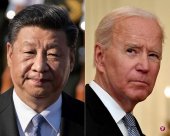In the context of the Sino -US game, the "Economic Security" constructed by Japan and the United States held the first "Erza two" economic conference in Washington. The two parties are expected to reach a consensus on joint research on the next generation of semiconductors.
Japan Foreign Minister Lin Fangzheng and Minister of Economy and Industry, Tatsumoto, went to Washington on Friday (July 29) to hold the "Erza Second" economic conference with US Secretary of State Brosky and Commerce Raymond. The supply chain security is expected to be them.Main discussion issues.
Japan Economic News issued a news before the meeting, saying that Japan and the United States would locally locally lock in a new generation of semiconductors in 2025, and prepare for "martial arts" in mainland China to ensure that the supply of semiconductor supply is constantly chain.The two governments have finalized the next -generation semiconductor of two nanometers to jointly research and large -scale production, which allows semiconductors to play more efficiently at less power.
In May of this year, Takada Kyoichi and Raymond have actively discussed the plans to properly promote the semiconductor partners. The joint statement of the Minister of Minister of the two countries also wrote this cooperation agreement.
The two countries have been set up in Japan to set up Japan's nano -chip R & D Center
The Japanese government intends to allocate 1 trillion yen (S $ 10.23.61 million) within 10 years as funding.
The two countries are expected to set up the "R & D Center of Japan -American Nano -chip" in Japan this year.According to the plan, Japan will be able to enjoy the technical equipment and human resources of the national semiconductor.In addition to intending to use the Institute of Industry and Technology Institute of Industry, Institute of Physics, and Tokyo University as its core R & D institutions, Japanese officials are also preparing to allow Japanese companies to participate.Japan and the United States will jointly design, develop production equipment and raw materials for the new generation of semiconductors, and build a production line.The prototype production line is expected to be put into production by 2025.Once the production stage is reached, it is also ready to provide relevant technologies to countries and regions with the same values of the two countries.
Nikkei pointed out that Japan's semiconductor production in the 1990s accounted for 50%of the world's market share, and now it only accounts for about 15%.The disadvantage of Japan is that it missed the promotion of research and development and design, which gave the United States and Taiwan responsible for the opportunity to have a horizontal division of labor.
At present, most of the 10 -nanometer chip used by smartphones is mostly produced by Taiwan.The United States is worried that if the situation of the Taiwan Strait changes, the supply of semiconductor will be unstable.The report pointed out that Japan and the United States intends to cooperate with Taiwan and South Korea to achieve "strong" in semiconductor production.In terms of the scale of semiconductor companies, TSMC is currently leading in Taiwan, followed by South Korea Samsung Electronics and Intel in the United States. Japan is optimistic about the equipment and chip raw materials required for semiconductor mass production.



